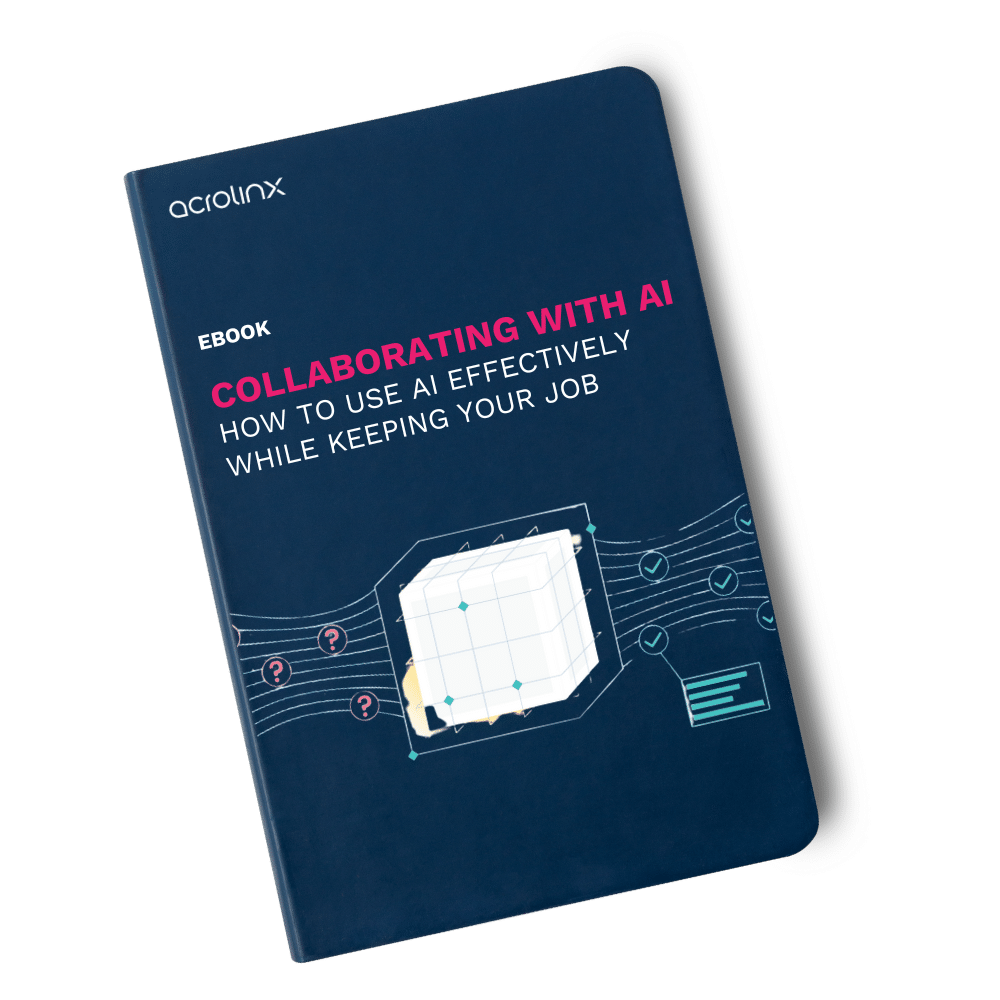How AI Authoring Tools Have Transformed Technical Writing and Compliance

As a technical writer, you know the common challenges that arise during the content creation process. You need to produce large quantities of documentation, while maintaining consistency across global markets and adapting to product updates.
Failing to do so results in inconsistent terminology, more time-consuming manual reviews, and the constant risk of non-compliance. This is a quick way to damage your brand reputation.
But what if we told you that creating high-quality content doesn’t have to be a hard endeavor for your team? AI authoring tools, also called AI writing tools, have exploded in recent years, and for good reason.
Once a futuristic concept, these intelligent solutions are now part of the technical writing landscape. It’s no longer about simple grammar checks. Modern AI tools are sophisticated assistants, helping writers to produce high-quality, compliant, and consistent content at scale.
Let’s explore more about how AI writing software can improve your technical writing processes!
The rise of AI in technical writing
Historically, technical writers have relied on manual processes, style guides, and extensive human review to safeguard accuracy, clarity, and consistency. With the right processes in place, these methods can be effective. Yet, they often struggle to keep pace with product development, particularly within large enterprises.
The sheer volume of information, coupled with the need for rapid updates and global localization, created bottlenecks and introduced the potential for human error … until AI writing assistants came along. Not convinced? Take it from an actual technical writer.
Tom Johnson, a Seattle-based technical writer, speaks about how AI authoring tools have accelerated his technical writing output: “AI is accelerating my doc output. I’m able to write similar documentation in half the time or less now.” He went on to say, “AI empowers me to do things I previously couldn’t.” That is an incredibly powerful claim to make, and speaks to just how much AI writing tools can increase output.
And that’s just the start. Let’s look at the other benefits of AI writing tools.
How AI authoring tools improve content quality
We know AI boosts writing output, but speed doesn’t always equate to accuracy.
This is why you need tools that provide a layer of oversight and assistance. You help writers produce accurate, clear, and consistent documentation faster across the board. Tools like Acrolinx, for example, provide real-time content quality scoring. Writers can visually see how well their content aligns with pre-defined guidelines.
Here are two ways AI tools improve the quality of your technical writing.
Automating repetitive tasks
Technical writers often spend valuable time on mundane, repetitive tasks. While necessary, these tasks detract from their core focus — content creation. Think of the time you spend formatting, checking for broken links, managing boilerplate text, or performing basic structural validations.
AI writing generators are the perfect catalyst for these elements. The right AI tool can:
- Automatically change a document’s format to a predefined template
- Insert standard disclaimers or legal text where necessary
- Generate initial drafts of routine sections or updates based on existing content or change logs.
This automation not only frees up technical writers to concentrate on higher-value, more creative, and critical content. It also drastically reduces the potential for human error, leading to a more efficient and accurate content supply chain.
Maintaining consistency across documentation
Large organizations face the challenge of maintaining a unified voice, precise terminology, and consistent style across large documentation sets. This becomes even harder when your writers work in different global locations.
Inconsistency leads to user confusion, erodes brand credibility, and inflates editing workloads. Comprehensive AI writing tools provide a content governance layer to address this. Unlike manual style guide enforcement, AI offers real-time feedback and corrections as writers create documentation.
These tools standardize terminology by highlighting non-approved terms and suggesting approved alternatives. Also, they enforce a unified style and tone trained on your organization’s specific guidelines.
By embedding these checks directly into the workflow, AI drastically reduces the need for extensive manual reviews. They speed up the publishing process while guaranteeing high-quality, on-brand outputs.
AI authoring tools and compliance
For enterprises operating in highly regulated industries, technical documentation isn’t merely informative. It’s a critical component of legal and regulatory adherence. Even minor deviations in brand image, missing disclaimers, or incorrectly phrased instructions lead to significant penalties, product recalls, or severe reputational damage. The right AI platform provides an indispensable layer of security and precision. It turns compliance from a manual effort into an automated, integrated process.
These intelligent platforms can be configured with specific regulatory guidelines, industry standards (like those from the FDA, HIPAA, or ISO), and internal legal frameworks. As writers create content, AI:
- Identifies and highlights phrases, terms, or omissions that could violate regulations, offering alternative compliant phrasing.
- Makes sure that all necessary legal disclaimers, warnings, or certifications are correctly included and positioned within the documentation.
- Cross-references content against live or frequently updated regulatory databases, providing proactive alerts to potential risks before publication.
By embedding compliance checks directly into the content creation workflow, AI dramatically reduces the risk of human error. It speeds up the approval process, and makes sure that all product documentation follows regulatory standards.
Top AI authoring tools for technical writing teams
You may have noticed us emphasizing “the right AI tools” throughout this article — and that was entirely intentional. While there are several AI content generators on the market, not all are equal. Especially when it comes to the specialized demands of technical writing and enterprise-level compliance. AI-generated content requires content governance, so choosing the correct tool is crucial for enterprise writing teams.
What to look for in an AI writing tool
First, we need to look beyond basic spell-checking and grammar correction. These are important, but only a piece of the puzzle. The right solution should integrate into your existing documentation processes and help overcome editorial bottlenecks. Here are features to look for in an AI writing tool:
Real-time guidance
The most effective tools offer immediate feedback on style, tone, terminology, and compliance as you write, preventing errors before they become ingrained.
Customization and adaptability
Look for platforms that can be fine-tuned on your specific style guides, brand voice, intended audience, and industry-specific terminology. By customizing your guidance like this, AI tools are able to make highly relevant and accurate suggestions.
Integration capabilities
A valuable AI authoring tool should integrate smoothly with your existing content management systems (CMS), authoring environments, and other essential workplace applications.
Compliance and governance features
For regulated industries, the ability to enforce legal and regulatory guidelines in real-time is non-negotiable. This includes highlighting non-compliant language and checking necessary disclaimers.
Scalability and enterprise support
Make sure the tool can handle the volume and complexity of content your enterprise produces, with strong support and security features.
Intuitive user interface
A user-friendly and accessible interface is critical for widespread adoption. It ensures writers can use the tool effectively without extensive training efforts.
Top AI tools for technical writing
While the market is dynamic, a few AI tools stand out for their capabilities in assisting technical writing teams, each with unique strengths.
Tool Strengths Acrolinx Acrolinx is specifically designed for enterprise content governance, providing real-time guidance on clarity, consistency, compliance, and brand voice across all content. It’s highly customizable to your organization’s specific guidelines and excels in large-scale, multilingual environments. This is the enterprise writing solution. Document360 Document360 is a knowledge base platform. Its main function is to help businesses create, manage, publish, and maintain self-service customer support documentation, internal wikis, product manuals, FAQs, and standard operating procedures. Generative AI models While not authoring tools in the traditional sense, conversational assistants based on large language models, can be valuable for technical writers, especially for creating first drafts. Still, they’re not a standalone solution, as they don’t offer content governance features.
Acrolinx is built to meet the exacting demands of large organizations. Its depth of customization and real-time governance make it a clear and comprehensive solution for enterprise technical writing teams.
Navigating the pitfalls of AI in technical writing
Yes, AI can be an incredibly helpful tool when creating documentation, but it’s important to remember that it still needs oversight. AI is at its best when used as a supplementary tool to creative thinking — not as the sole creator of a document. Without proper oversight, AI tools lead you into the same legal and regulatory traps you hoped to avoid.
When using AI for technical writing, you should always:
- Address data quality and bias: AI models are only as good as the data they’re trained on. If training data contains inconsistencies or biases, the AI can perpetuate these issues in its output. Technical teams must implement data governance strategies to ensure the quality and neutrality of the information fed to AI tools.
- Overcome the learning curve: While AI is hardly new, it may take time for your more seasoned writers to familiarize themselves with the tools. Teams need comprehensive training programs that go beyond basic tool operation, focusing on prompt engineering, critical evaluation of AI outputs, and understanding how to collaborate with AI as a co-pilot effectively. Investing in continuous upskilling is essential for maximizing adoption and long-term success.
- Maintain human oversight: Human judgment remains irreplaceable. Technical writers must be responsible for content accuracy, clarity, and strategic intent. Over-reliance on AI without critical human review leads to errors, a loss of nuanced understanding, and a diminished human touch in documentation.
- Ensure data security and privacy: Integrating AI tools, especially those that process sensitive product information or company guidelines, necessitates stringent data security and privacy protocols. Organizations must ensure that AI platforms comply with all relevant data protection regulations and that confidential information is handled securely throughout the AI workflow.
- Measure ROI: Quantifying the exact return on investment (ROI) from AI authoring tools is challenging. Businesses need to establish metrics — such as reduced review cycles, improved compliance scores, or faster time-to-publication — to measure the impact and demonstrate the value of AI integration to stakeholders.
Curious to learn more about generative AI and how to collaborate with it to get the most out of it? Download our eBook!
Are you ready to create more content faster?
Schedule a demo to see how content governance and AI guardrails will drastically improve content quality, compliance, and efficiency.
The Acrolinx Team






